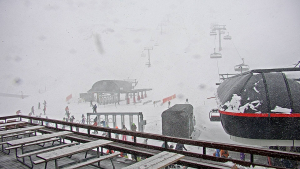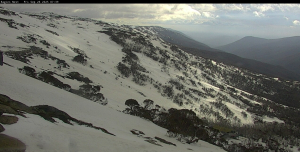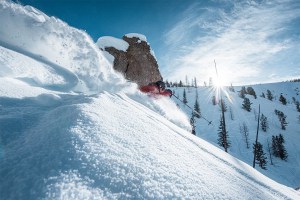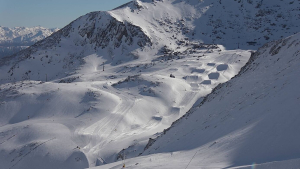Exploring The Deep Snow Destinations of Japan’s Tohoku Region
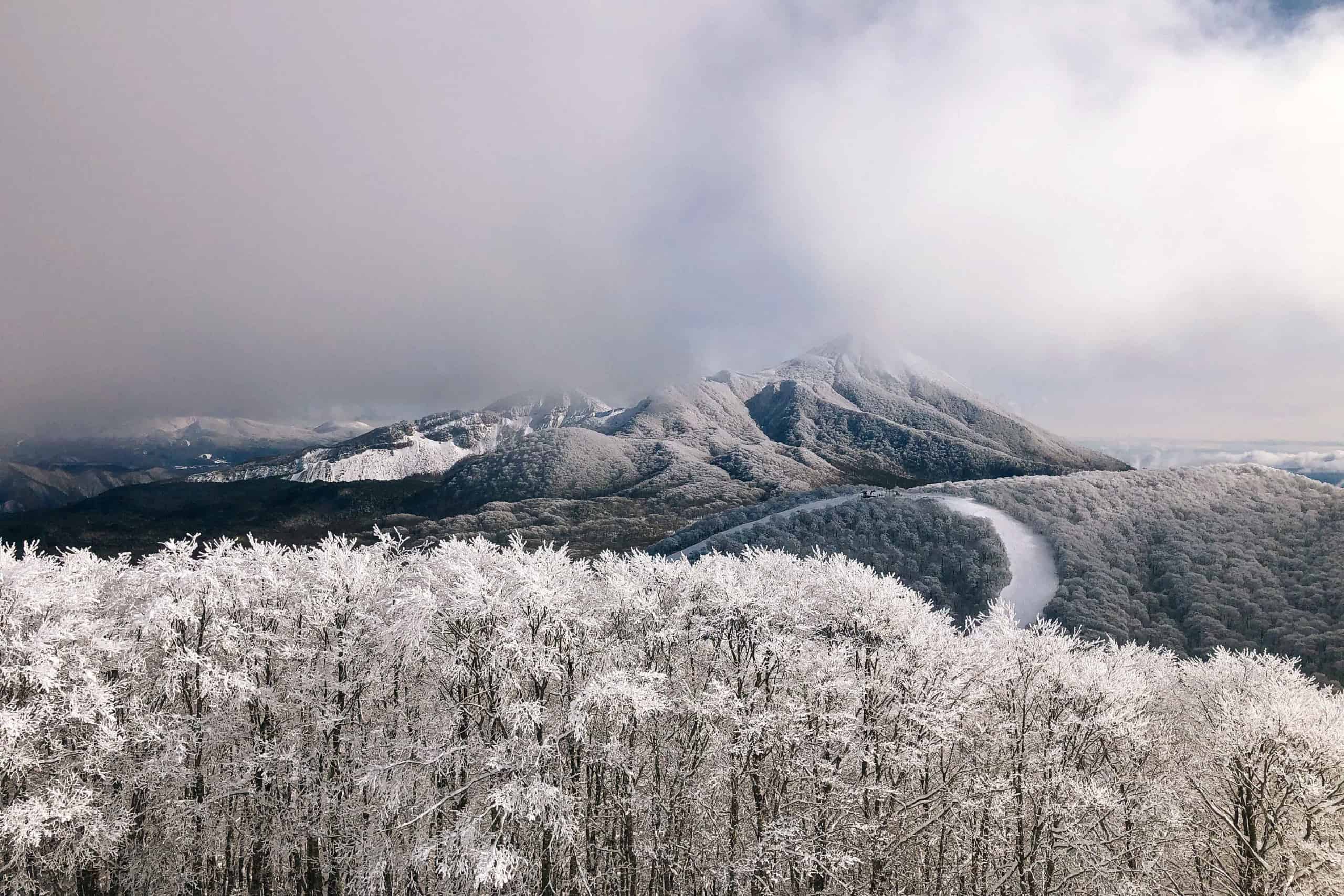
Mountainwatch | Nadine Robb
While the likes of Hakuba and Niseko are well established names on the Japanese ski circuit, Tohoku -the northern portion of Honshu island – is one area that remains largely undiscovered by foreign ski tourists. Given that Japan’s land mass is 70-80% mountainous, and is also home to one of the world’s snowiest ski towns, it is unsurprising that a huge number of ski resorts scatter the country, often offering unparalleled snow conditions throughout the winter months.
Tohoku specifically receives more annual snowfall than any other region in Japan, and it’s higher geographical positioning sees that cool temperatures are maintained – consistently creating the light, dry blower powder that Japan has become so famous for.
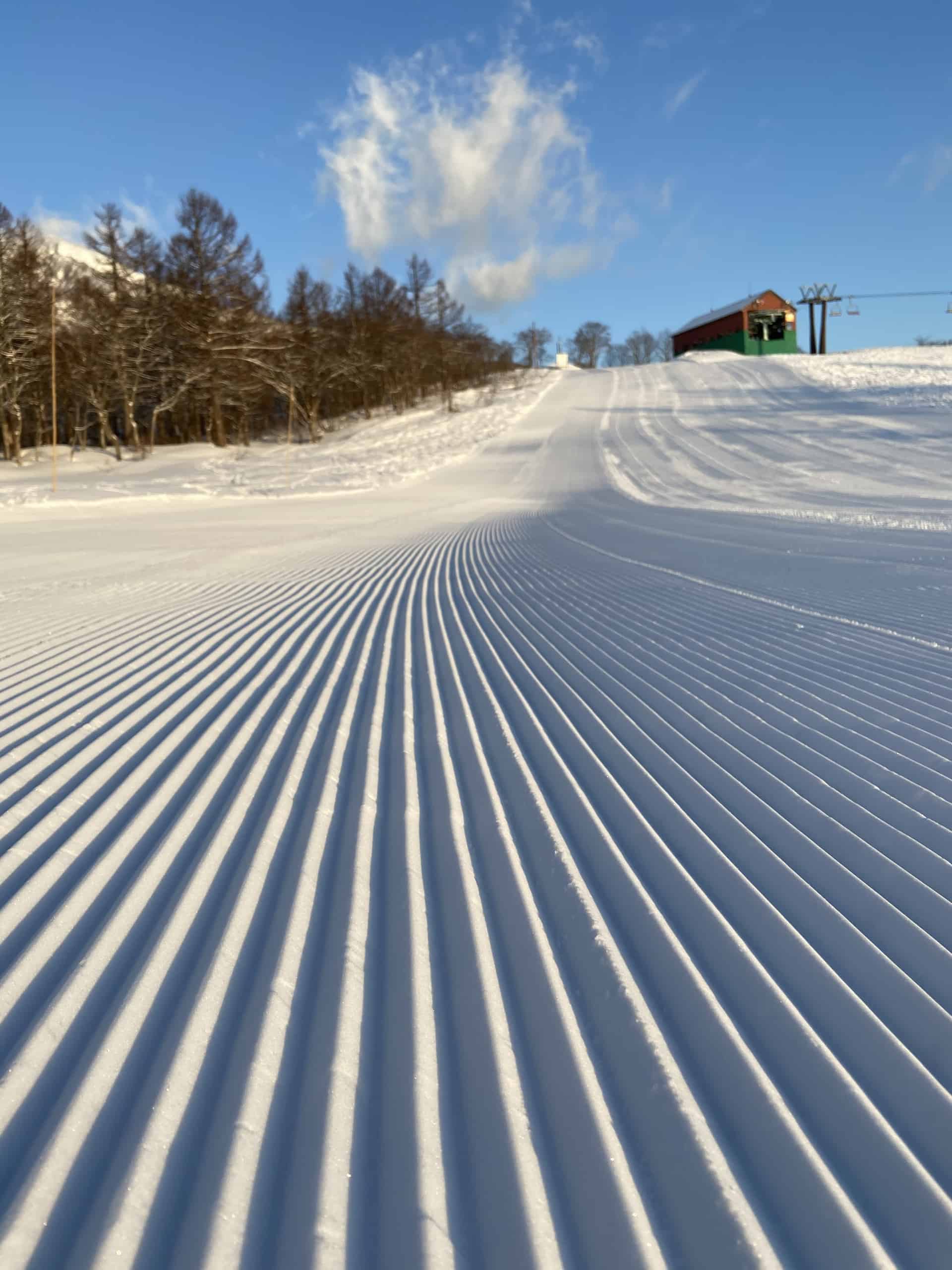
In the midst of the mountains, several strata-volcanoes stand tall in northern Honshu – the lower slopes of which you’ll often find sprinkled with ski resorts. One such volcano is the mighty Mt Myoko in Niigata Prefecture, standing at a monumental 2454 meters above sea level, and perched on its flanks are some separate ski resorts – Akakura Onsen Ski Area being one of them. Akakura Onsen ski resort is well suited to families and entry level to intermediate riders, thanks to its high percentage of low angle terrain, ease of access, and overall lack of humans littering the lift tops – creating a calm, stress free space in which to learn.
True to its name as an onsen (hot spring) village, the tiny streets of Akakura are heavy with atmosphere, and enticing smells wafting out of nearby Izakayas (a Japanese pub) – offering a true taste of Japan.
When the weather offers a rare break and the visibility is fair, heading into the backcountry above and beyond the resorts can lead to some of the most raw, memorable backcountry adventures imaginable.
As always – and I cannot stress this enough – be sure to hire a professional local guide when venturing off piste or into the backcountry, in addition to having the necessary equipment, skills and experience to enter it. This is big mountain territory, and fast changing weather can quickly disorientate the most experienced of riders. Having intimate local knowledge with you is so important, even in the side-country areas.
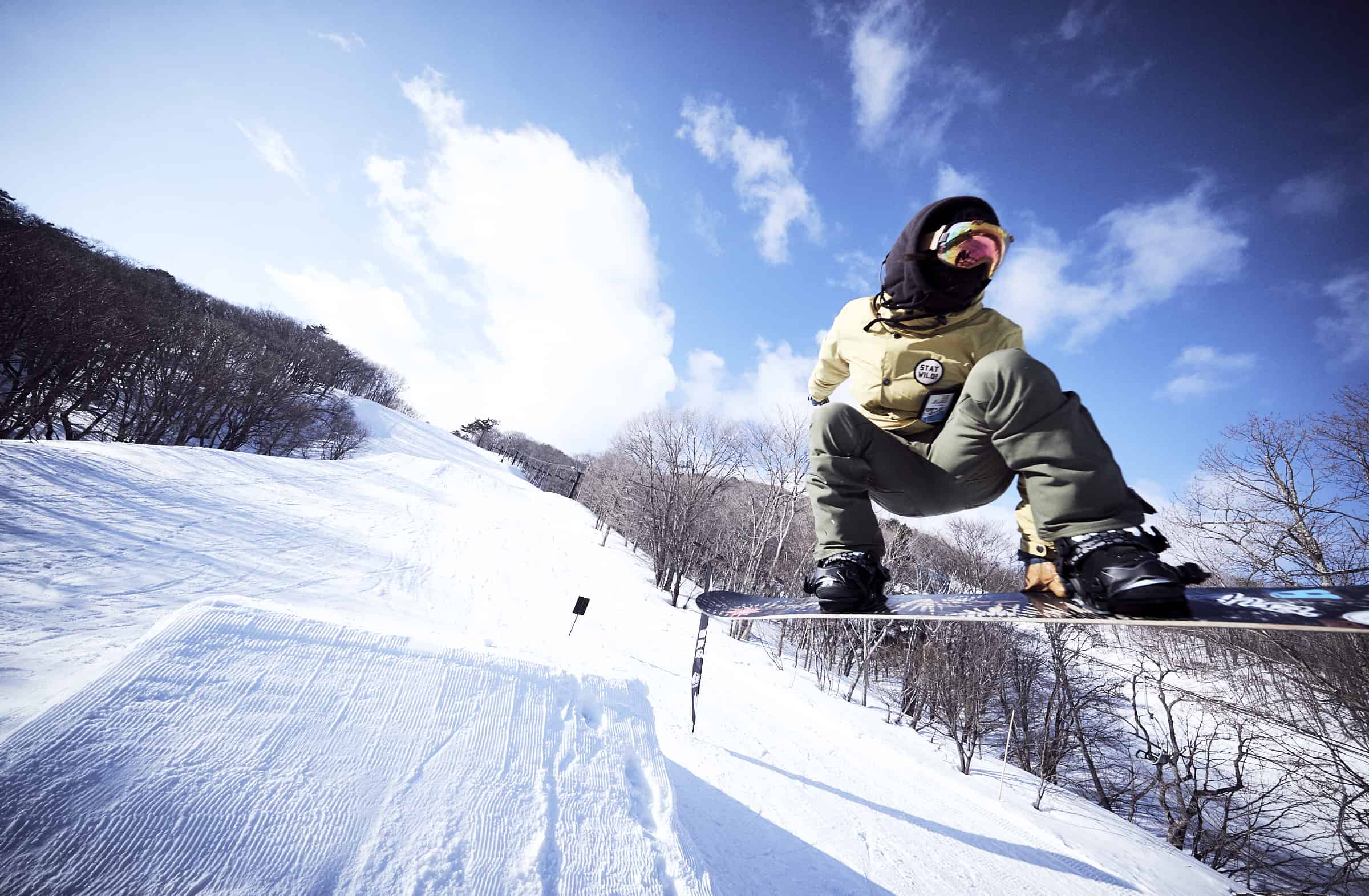
Not unlike Mt Myoko – in that it too is an enormous stratovolcano – is Mt Bandaisan in Fukushima Prefecture. Though it stands slightly shorter at 1816 meters, it does take the win for the number of ski resorts – with over ten separate ski areas decorating its expansive lower slopes. As the largest of these, Alts Bandai offers a great variety in slope options, an impressive terrain park and a truly luxurious snow experience. The Hoshino Resorts owned and operated Alts Bandai Ski Resort feels fresh, contemporary and fun. Curious and quirky style choices throughout the resort make you want to whip out your phone for “Insta ops”, while the ski in/ski out Bandaisan Onsen Hotel ensures a seamless transition between the slopes – and your bed (with some fantastic meals and ever so relaxing onsens in between).
And when the sun is out – bright and brilliant in the sky – the views from Alts Bandai Ski Resort are nothing short of impressive. In contrast, when the snow storms descend, unloading their fluffy bounty, the advanced off piste areas deliver the goods with playful tree lines and a variety of off piste and backcountry options, including Cat skiing and guided tours.
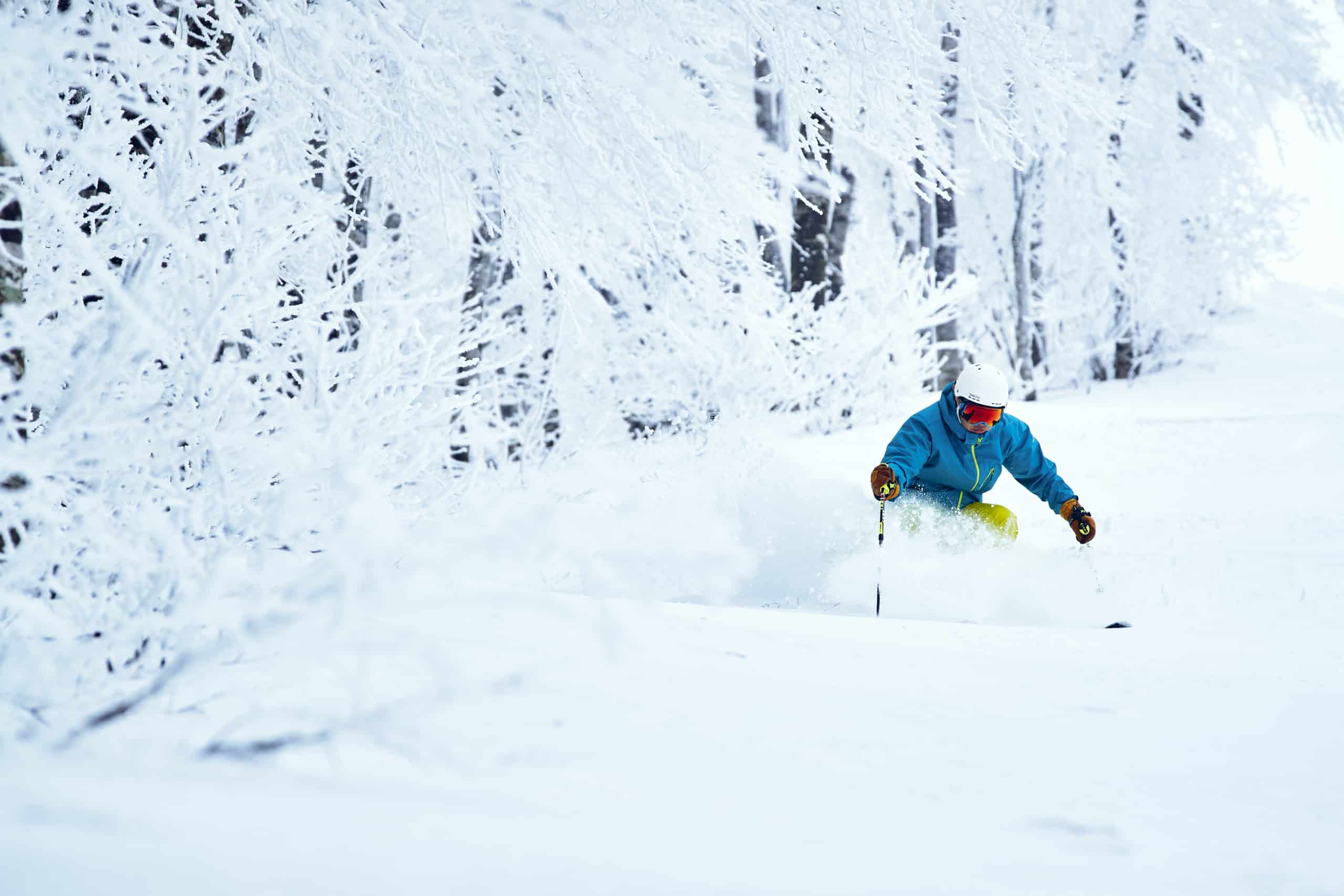
On the other side of the same mountain (Mt Bandai), there is Nekoma Ski Resort. Another string in the Hoshino Resorts bow, north facing Nekoma differs from its southern counterpart in almost every way. Having less exposure to direct sunlight for fewer days of the season, the snow retains its subzero temperatures for longer, creating what they’ve coined (ever so proudly) “microfine snow”.A combination of elevation (above 1000 meters), a typically drier inland climate create snow that is akin to what you’d expect to find in Hokkaido -where temperatures are consistently much lower.It is relatively less crowded than Hokkaido, so you can experience fine snow in a comfortable environment.The result is light, dry, bouncy snow, fit for a Cody Townsend ski movie. The off piste areas and Cat Ski Tours are the best ways to maximise your powdery turns.
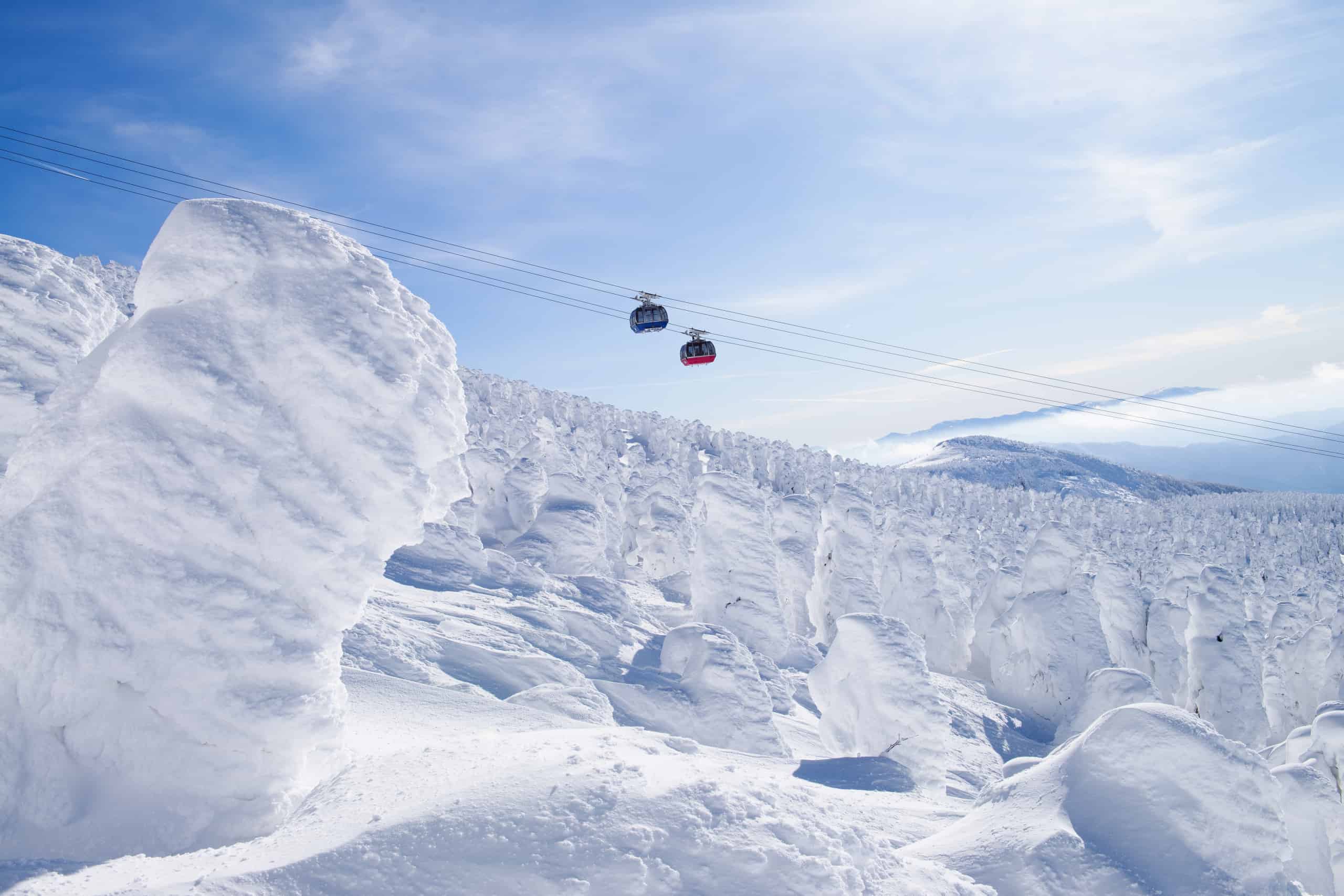
North of Nekoma Ski Resort liesone of the region’s largest resorts – once again stretched across the lower slopes of a stratovolcano complex – Zao Onsen Ski Resort.
In recent years Zao has nudged its way onto the international ski map, and with good reason. Boldly checking the boxes for snow volume, snow quality and atmosphere in the onsen village nestled at its feet, Zao ups the ante with its “snow monsters”. The high winds and low temperatures that often circle the summit have an aesthetically interesting effect on the hardy trees that grow there – covering them completely in ice, rime and snow. With no hint of green visible on these snow-clad structures, they take on an unworldly appearance, amplified further by their nightly illuminations. Both skiers and non-skiers can ride up to the summit area to take in the spectacle, either during the day or at night time.
And as for the skiing? It is another solid all-round resort. The majority of lower slopes are best suited to beginner and intermediate skiers, with wide open slopes and facilities at your fingertips. There are also some great green sections mid-mountain, which is especially advantageous during early or low season (before there is sufficient coverage at the base).As a bowl-shaped resort, most slopes funnel back to the village area, allowing different slope aspects to be enjoyed within the same day (I’d recommend hitting the south facing slopes in the morning, and then moving to the northern aspects in the afternoon). There are some intermediate slopes higher up, and once you reach the top, you’re in expert skier territory. Never groomed, the upper portion is reserved for off piste adventuring, and frequent snowfall means that you’re often thigh deep in powder as you weave in and out of the snow monsters.
Far from being a purpose-built town to service the ski resort, Zao Onsen is incredibly historic, with over 100 years of history. As one of the country’s oldest hot spring villages, wooden-housed hot springs are abundant, connected by crooked side streets that sometimes feature Ryokans (traditional guest houses) and izakayas. There is magic in Zao; in its pervading powder to freeze time – suspending you in the ever present.
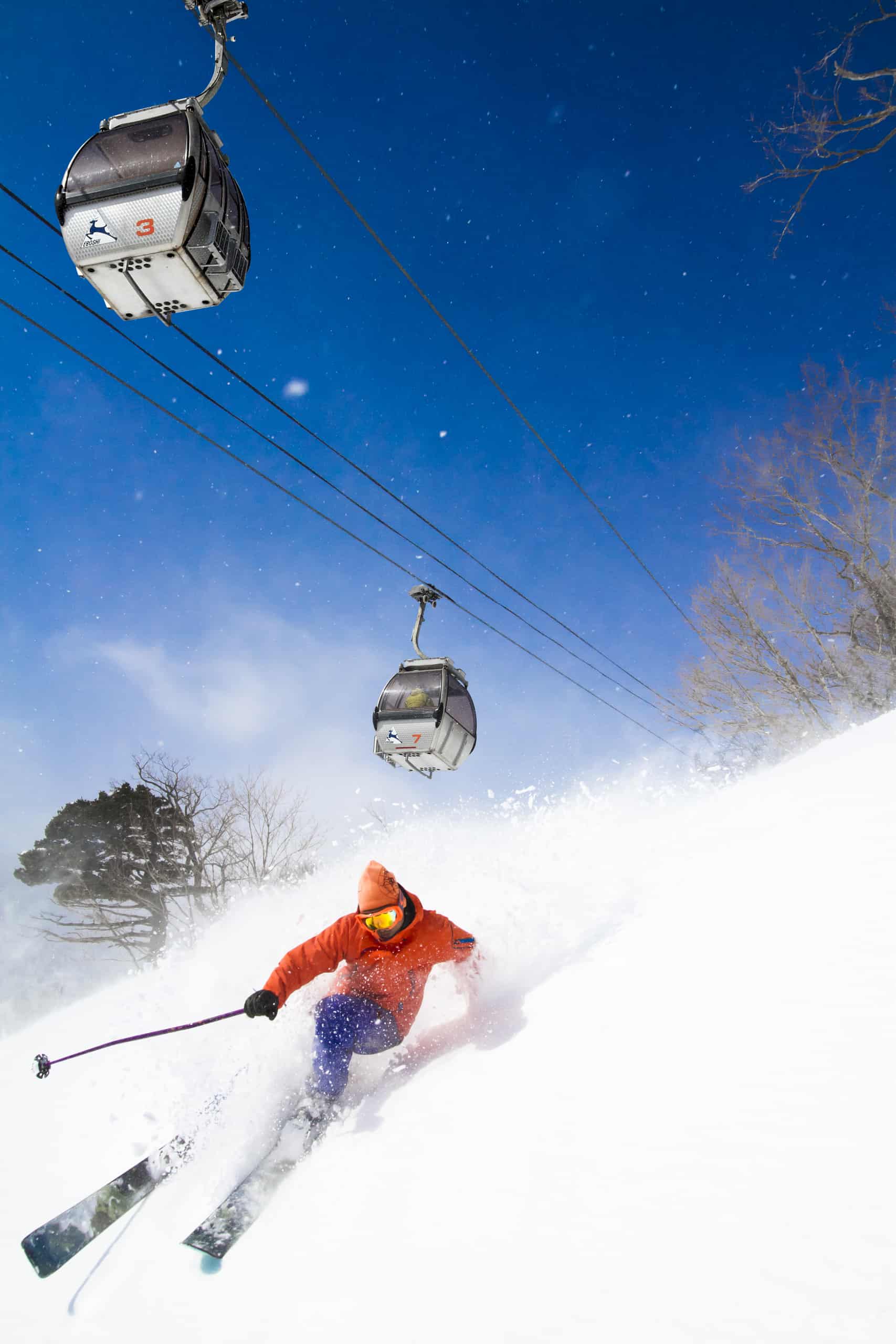
On the other side of the Zao Mountain complex, there is Miyagi Zao Eboshi Ski Resort .It’s understated nature once again draws relatively fewer crowds, but its location ensures the snow. The kids park at the base is full of fun features, including the region’s longest “Magic Carpet” (80 meters), and plenty of non-ski activities. Having options for snow play, sledding and even inflatable play structures is invaluable for families – providing a way for everyone to enjoy the snow at any age or interest. The views on a clear day are good for the soul, and the variety in slope choices cover all bases for ages and abilities – even through the extensive night skiing slope selection.
Combining a day or two here with a visit to Zao Onsen will once again deliver a full and balanced experience of skiing in the Tohoku region. Skiing that, invariably involves epic snow, neat new places and wholly original adventures.
